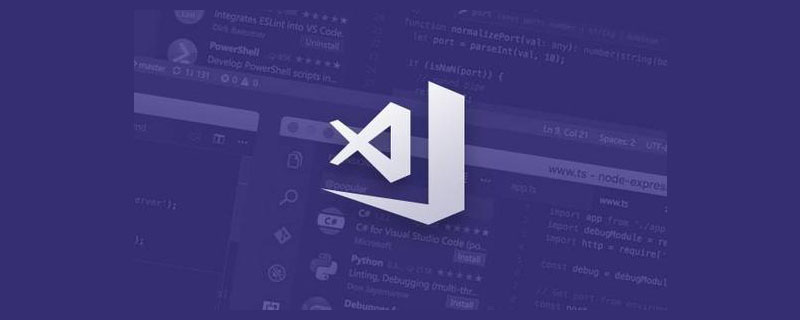 Backend Development
Backend Development PHP Tutorial
PHP Tutorial Practical Tips in PHP Development: Using Memcache to Improve Website Speed
Practical Tips in PHP Development: Using Memcache to Improve Website SpeedPractical tips in PHP development: Using Memcache to improve website speed
Introduction:
In the current era of rapid development of the Internet, website speed has become one of the important factors in user experience. A responsive website can attract more visitors and increase user satisfaction and loyalty. The targeted use of some acceleration techniques is also one of the effective ways to improve website speed. This article will introduce how to use Memcache to speed up the website and improve access speed.
1. What is Memcache
Memcache is a high-performance distributed memory object caching system, mainly used to reduce the load of the database and improve the access speed of the website. One feature of Memcache is that the data is stored in memory, so it is faster than reading the database directly. And because of its strong scalability, cached data can be distributed across multiple servers, thereby improving concurrent processing capabilities.
2. Installation and configuration of Memcache
-
Installing Memcache
On Linux systems, you can install the Memcache extension through the following command:sudo apt-get install memcached sudo apt-get install php-memcached
-
Configure Memcache
Edit the/etc/memcached.conffile to configure the operating parameters of Memcache.# 运行在默认端口 -p 11211 # 监听所有的IP地址 -l 0.0.0.0
3. Use Memcache to accelerate the website
The following will introduce how to use Memcache to accelerate the website in PHP development.
-
Connect to the Memcache server
In the PHP code, you first need to connect to the Memcache server. You can use thememcache_connectfunction to connect to the Memcache server.$memcache = memcache_connect('localhost', 11211); if (!$memcache) { die('无法连接到Memcache服务器'); } -
Cache data
Next, you can use thememcache_setfunction to cache data.$key = 'cache_key'; $data = '缓存数据'; $expire = 3600; // 缓存时间,单位为秒 // 将数据存储到Memcache中 memcache_set($memcache, $key, $data, MEMCACHE_COMPRESSED, $expire);
-
Get cached data
To get cached data, you can use thememcache_getfunction.$key = 'cache_key'; $data = memcache_get($memcache, $key); if ($data) { // 缓存数据存在,直接使用 echo $data; } else { // 缓存数据不存在,从数据库中获取并缓存 $data = '数据库数据'; // 将数据存储到Memcache中 memcache_set($memcache, $key, $data, MEMCACHE_COMPRESSED, $expire); // 使用数据 echo $data; } -
Delete cached data
If you need to delete cached data, you can use thememcache_deletefunction.$key = 'cache_key'; memcache_delete($memcache, $key);
-
Clear cache
If you need to clear the entire cache, you can use thememcache_flushfunction.memcache_flush($memcache);
4. Usage Scenarios
Using Memcache can improve the access speed of the website, which is suitable for the following scenarios:
-
Database query results Cache
Cache query results into Memcache, which can reduce the load on the database and improve the response speed of the website.$cacheKey = 'query_key'; $cacheData = memcache_get($memcache, $cacheKey); if (!$cacheData) { // 查询数据库 $query = 'SELECT * FROM table'; $result = mysqli_query($query); // 将查询结果保存到缓存中 memcache_set($memcache, $cacheKey, $result, MEMCACHE_COMPRESSED, $expire); } else { // 直接使用缓存中的数据 echo $cacheData; } -
Caching of static resources
For some static resources, such as CSS, JS, etc., you can cache them in Memcache to reduce the load on the server and improve the loading speed of web pages.$cacheKey = 'css_key'; $cacheData = memcache_get($memcache, $cacheKey); if (!$cacheData) { // 从文件中读取CSS内容,并保存到缓存中 $css = file_get_contents('path/to/css.css'); memcache_set($memcache, $cacheKey, $css, MEMCACHE_COMPRESSED, $expire); $cacheData = $css; } // 输出CSS内容 echo $cacheData;
Conclusion:
By using Memcache to cache data, the access speed of the website can be effectively improved and the user experience improved. In actual development, you can select appropriate data for caching based on specific scenarios, and set the cache time as needed. At the same time, you also need to pay attention to the cache update mechanism to avoid using expired cache data. I believe that by using Memcache properly, you can make your website faster and more efficient.
Reference source:
- PHP official documentation - Memcache: https://www.php.net/manual/zh/book.memcache.php
- Memcache Installation and configuration: https://blog.linuxeye.cn/384.html
- Usage example of Memcache: https://www.tecmint.com/memcached-php-how-to-cache-results -for-faster-page-loads
The above is the detailed content of Practical Tips in PHP Development: Using Memcache to Improve Website Speed. For more information, please follow other related articles on the PHP Chinese website!
 微信小程序中PHP开发的翻页特效实现方法Jun 01, 2023 pm 01:51 PM
微信小程序中PHP开发的翻页特效实现方法Jun 01, 2023 pm 01:51 PM在微信小程序中,PHP开发的翻页特效是非常常见的功能。通过这种特效,用户可以轻松地在不同的页面之间进行切换,浏览更多的内容。在本文中,我们将介绍如何使用PHP来实现微信小程序中的翻页特效。我们将会讲解一些基本的PHP知识和技巧,以及一些实际的代码示例。理解基本的PHP语言知识在PHP中,我们经常会用到IF/ELSE语句、循环结构,以及函数等一些基本语言知识。
 微信小程序中PHP开发的常用工具库介绍Jun 01, 2023 pm 07:40 PM
微信小程序中PHP开发的常用工具库介绍Jun 01, 2023 pm 07:40 PM随着微信小程序的普及和发展,越来越多的开发者开始涉足其中。而PHP作为一种后端技术的代表,也在小程序中得到了广泛的运用。在小程序的开发中,PHP常用工具库也是很重要的一个部分。本文将介绍几款比较实用的PHP常用工具库,供大家参考。一、EasyWeChatEasyWeChat是一个开源的微信开发工具库,用于快速开发微信应用。它提供了一些常用的微信接口,如微信公
 如何利用PHP开发商城的满额赠礼功能May 22, 2023 am 10:02 AM
如何利用PHP开发商城的满额赠礼功能May 22, 2023 am 10:02 AM网上购物已经成为人们日常生活中不可或缺的一部分,因此,越来越多的企业开始关注电商领域。开发一款实用、易用的商城网站也成为了企业提高销售额、拓展市场的必要手段之一。在商城网站中,满额赠礼功能是提高用户购买欲望和促进销售增长的重要功能之一。本文将探讨如何利用PHP开发商城的满额赠礼功能。一、满额赠礼功能的实现思路在商城开发中,如何实现满额赠礼功能呢?简单来说就是
 微信小程序中PHP开发的加密和解密实现方法Jun 01, 2023 am 08:12 AM
微信小程序中PHP开发的加密和解密实现方法Jun 01, 2023 am 08:12 AM随着微信小程序在移动应用市场中越来越流行,它的开发也受到越来越多的关注。在小程序中,PHP作为一种常用的后端语言,经常用于处理敏感数据的加密和解密。本文将介绍在微信小程序中如何使用PHP实现加密和解密。一、什么是加密和解密?加密是将敏感数据转换为不可读的形式,以确保数据在传输过程中不被窃取或篡改。解密是将加密数据还原为原始数据。在小程序中,加密和解密通常包括
 PHP开发中提供效率的VSCode插件推荐(值得收藏)Mar 30, 2021 pm 07:31 PM
PHP开发中提供效率的VSCode插件推荐(值得收藏)Mar 30, 2021 pm 07:31 PM本篇文章给大家推荐一些VSCode+PHP开发中实用的插件。有一定的参考价值,有需要的朋友可以参考一下,希望对大家有所帮助。
 微信小程序中PHP开发的自动更新方法Jun 01, 2023 pm 11:40 PM
微信小程序中PHP开发的自动更新方法Jun 01, 2023 pm 11:40 PM近年来,移动互联网的快速发展和移动终端的普及,让微信应用程序成为了人们生活中不可或缺的一部分。而在微信应用程序中,小程序更是以其轻量、快速、便捷的特点受到了广泛的欢迎。但是,对于小程序中的数据更新问题,却成为了一个比较头疼的问题。为了解决这一问题,我们可以使用PHP开发的自动更新方法来实现自动化数据更新。本篇文章就来探讨一下微信小程序中PHP开发的自动更新方
 微信小程序中PHP开发的状态码和错误处理方法May 31, 2023 pm 07:52 PM
微信小程序中PHP开发的状态码和错误处理方法May 31, 2023 pm 07:52 PM作为目前最流行的社交媒体平台之一,微信已经成为了企业和个人互动沟通的重要渠道之一。而微信小程序则更加方便用户使用和开发者创新。在小程序开发中,PHP是一种重要的后端技术,但是在开发过程中很容易出现状态码和错误处理方面的问题。本文将介绍微信小程序中PHP开发的各种状态码和错误处理方法。一、微信小程序中的状态码在微信小程序中,HTTP状态码(HTTPStatu
 微信小程序中PHP开发的文本框自动完成功能实现方法Jun 01, 2023 pm 07:42 PM
微信小程序中PHP开发的文本框自动完成功能实现方法Jun 01, 2023 pm 07:42 PM随着微信小程序的普及,各类开发需求也日渐增多。其中,文本框自动完成功能是小程序中常用的功能之一。虽然微信小程序提供了一些原生的组件,但是有一些特殊需求还是需要进行二次开发。本文将介绍如何使用PHP语言实现微信小程序中文本框自动完成功能。准备工作在开始开发之前,需要准备一些基本的环境和工具。首先,需要安装好PHP环境。其次,需要在微信小程序后台获取到自己的Ap


Hot AI Tools

Undresser.AI Undress
AI-powered app for creating realistic nude photos

AI Clothes Remover
Online AI tool for removing clothes from photos.

Undress AI Tool
Undress images for free

Clothoff.io
AI clothes remover

AI Hentai Generator
Generate AI Hentai for free.

Hot Article

Hot Tools

mPDF
mPDF is a PHP library that can generate PDF files from UTF-8 encoded HTML. The original author, Ian Back, wrote mPDF to output PDF files "on the fly" from his website and handle different languages. It is slower than original scripts like HTML2FPDF and produces larger files when using Unicode fonts, but supports CSS styles etc. and has a lot of enhancements. Supports almost all languages, including RTL (Arabic and Hebrew) and CJK (Chinese, Japanese and Korean). Supports nested block-level elements (such as P, DIV),

Safe Exam Browser
Safe Exam Browser is a secure browser environment for taking online exams securely. This software turns any computer into a secure workstation. It controls access to any utility and prevents students from using unauthorized resources.

MinGW - Minimalist GNU for Windows
This project is in the process of being migrated to osdn.net/projects/mingw, you can continue to follow us there. MinGW: A native Windows port of the GNU Compiler Collection (GCC), freely distributable import libraries and header files for building native Windows applications; includes extensions to the MSVC runtime to support C99 functionality. All MinGW software can run on 64-bit Windows platforms.

Notepad++7.3.1
Easy-to-use and free code editor

SublimeText3 Linux new version
SublimeText3 Linux latest version





